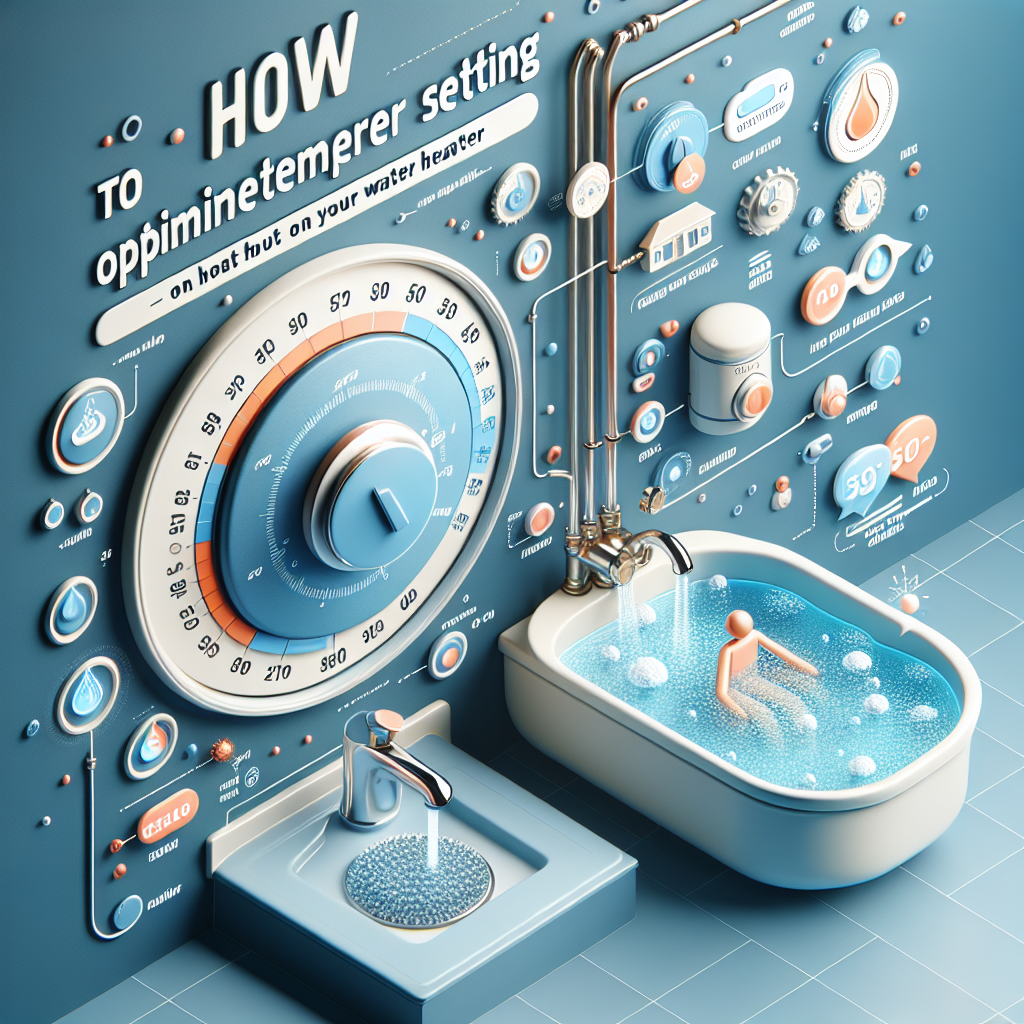When it comes to home comfort, few appliances are as crucial as your water heater. Whether you’re preparing a hot bath after a long day or trying to wash dishes in hot water, the temperature setting of your water heater can significantly impact both comfort and efficiency. Optimizing your water heater’s temperature isn’t just about convenience; it can also save you money and prevent safety hazards. In this guide, we’ll walk you through everything you need to know to set your water heater to the perfect temperature.
Why Does Water Heater Temperature Matter?
1. Efficiency and Energy Savings
A higher temperature setting on your water heater can lead to more energy consumption and higher utility bills. Lowering the temperature can reduce energy costs. The U.S. Department of Energy recommends a setting of 120°F (49°C) for optimal efficiency. This not only keeps energy costs down but also contributes to a more sustainable household.
2. Safety Concerns
Setting your water heater too high can create a significant safety hazard, especially in households with young children or elderly members. Water at temperatures over 140°F can cause severe burns in just a few seconds. Therefore, it’s crucial to find a balance that keeps your family safe while still meeting your hot water needs.
3. Preventing Bacteria Growth
While a higher temperature might seem better for cleanliness, maintaining a water heater temperature that is too low could promote bacterial growth. Legionella, the bacteria that causes Legionnaires’ disease, thrives in water temperatures between 77°F and 113°F. Keeping your water heater at or above 120°F can help prevent this issue while still keeping energy costs reasonable.
How to Adjust Your Water Heater Temperature
1. Locate the Temperature Control
Most water heaters have a temperature dial or electronic interface. If you have a traditional tank model, you’ll likely find the temperature control on the front or the side of the unit. For electric water heaters, there are usually two thermostats—one for the upper element and one for the lower element. Make sure to adjust both if necessary.
2. Using a Thermometer
Before making any adjustments, it’s a good idea to check the actual temperature of your hot water. Fill a glass with hot water from the tap and use a thermometer to measure it. This step helps you understand where you currently stand and ensures you set the temperature accurately.
3. Adjust the Settings
Once you’ve located the temperature control and measured the current temperature, it’s time to make adjustments. For a typical setting of 120°F (49°C), turn the dial accordingly. If you have an electric water heater, you may need to lift the protective panel on the thermostat to access the dial.
4. Wait and Check Again
After adjusting, give your water heater some time to adjust to the new setting—typically about 30 minutes to an hour. After this time, measure the temperature again to ensure it’s set correctly.
Maintenance Tips for Your Water Heater
1. Flush the Tank
Sediment builds up in your water heater over time, affecting its efficiency. Flushing the tank regularly—about once a year—can help maintain performance and prolong the lifespan of your appliance.
2. Insulate Your Heater and Pipes
If your water heater is located in an unconditioned space, such as a garage or basement, consider insulating it. Additionally, insulating the hot water pipes can help keep water warm as it travels to your tap, minimizing the need to crank up the temperature.
3. Schedule Regular Inspections
Having a professional inspect your water heater periodically can catch any issues before they become significant problems. A qualified technician can also help you optimize settings for your specific situation.
FAQs About Water Heater Temperature Settings
Q1: What Should I Set My Water Heater to for Optimal Efficiency?
A: The U.S. Department of Energy recommends a setting of 120°F (49°C) as the ideal compromise between safety, efficiency, and cleanliness.
Q2: How Can I Prevent Bacteria Growth in My Water Heater?
A: Keeping your water heater at or above 120°F (49°C) helps to minimize the risk of bacteria growth without overly increasing energy costs.
Q3: Can I Adjust Water Heater Temperature Manually?
A: Yes, you can manually adjust the temperature settings on both electric and gas water heaters. Just be sure to monitor the temperature afterward to ensure that it’s set correctly.
Conclusion
Optimizing the temperature setting on your water heater not only enhances your comfort but also contributes to energy savings and safety. By following the steps outlined in this guide, you can create a more efficient, safer home environment. Remember, it’s essential to review your settings periodically and perform regular maintenance to keep your water heater running smoothly. Your hot water supply should not only serve your immediate needs but also support your overall household’s well-being.


